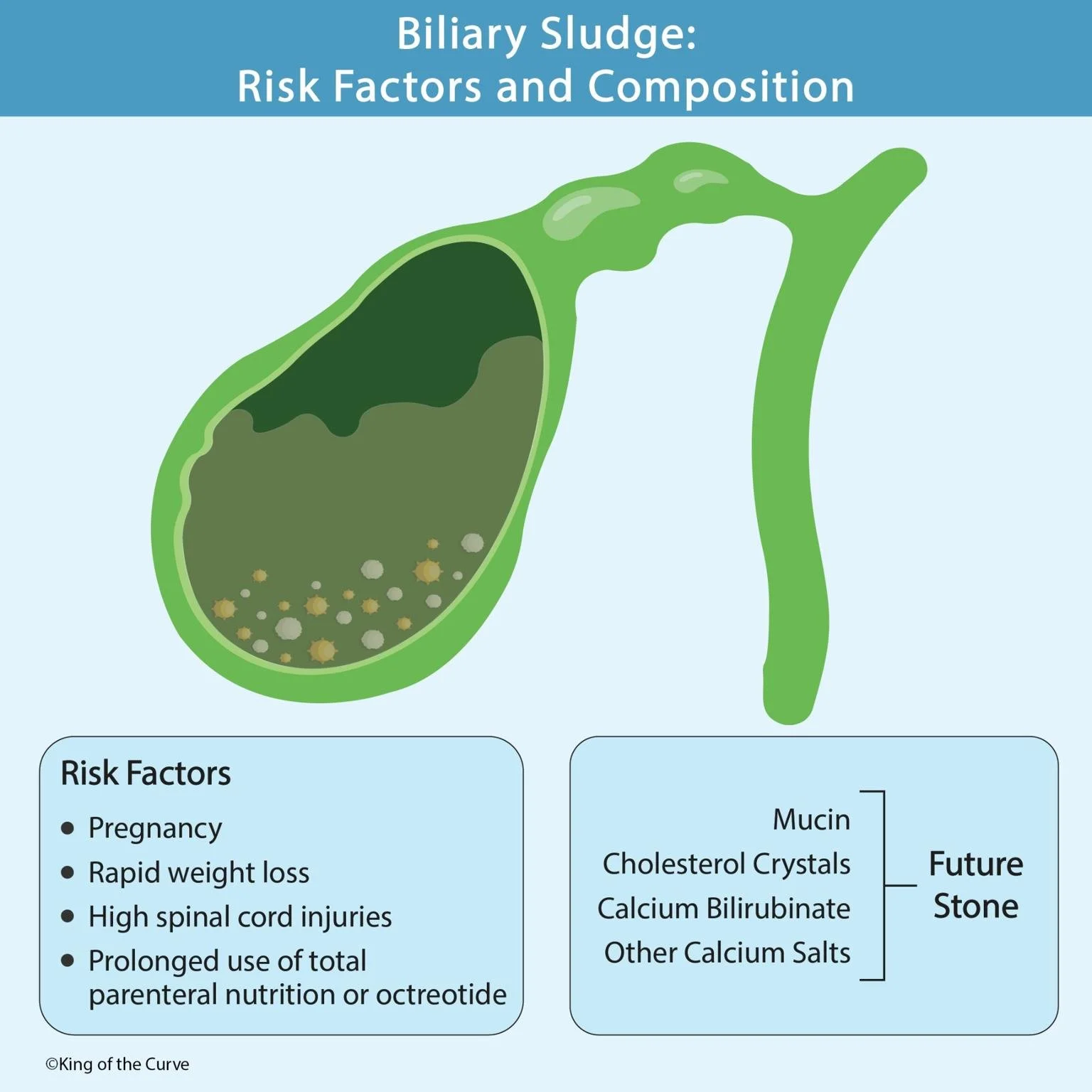🩺 Biliary Sludge: Risk Factors and Composition Explained
Biliary sludge, often an incidental finding on abdominal imaging, plays a critical role in the development of gallstones and various gallbladder disorders. Despite its subtle presentation, understanding biliary sludge is essential for recognizing early signs of hepatobiliary disease.
💡 What Is Biliary Sludge?
Biliary sludge is a gel-like mixture of bile components that accumulates in the gallbladder when normal bile flow is disrupted. While it often resolves on its own, in some cases, it can progress to form gallstones (cholelithiasis) or cause complications such as cholecystitis or pancreatitis.
🔬 Composition of Biliary Sludge
The sludge is made up of:
Mucin: A glycoprotein that traps other particles.
Cholesterol Crystals: Form when bile becomes supersaturated with cholesterol.
Calcium Bilirubinate: A pigment component derived from bilirubin.
Other Calcium Salts: Include calcium phosphate and carbonate.
These components gradually clump together, potentially forming a "future stone" — the precursor to gallstones.
⚠️ Risk Factors
Several clinical and lifestyle factors increase the likelihood of developing biliary sludge. These include:
Pregnancy: Hormonal changes slow gallbladder emptying.
Rapid Weight Loss: Causes cholesterol mobilization, oversaturating bile.
High Spinal Cord Injuries: Affect gallbladder motility and neural regulation.
Prolonged Use of Total Parenteral Nutrition (TPN) or Octreotide: Both suppress gallbladder contraction and bile flow.
🧪 Clinical Relevance
Biliary sludge may be:
Asymptomatic and found on routine ultrasound.
Symptomatic, leading to pain, nausea, or biliary colic.
A warning sign of future gallstones, especially in high-risk patients.
In certain settings, such as ICU or post-surgical patients, identifying and managing biliary sludge early can prevent severe complications like acute pancreatitis.
🩻 Diagnosis & Treatment
Ultrasound is the most effective diagnostic tool for detecting biliary sludge, revealing echogenic material without acoustic shadowing.
Management depends on:
Symptom presence
Risk of stone formation
Underlying causes (e.g., adjusting TPN or medications)
In recurrent or high-risk cases, cholecystectomy (gallbladder removal) may be considered.
🧠 Final Thoughts
Biliary sludge may seem benign, but its presence can signal underlying imbalances in bile chemistry and gallbladder function. Recognizing the risk factors and composition not only aids diagnosis but also guides early intervention, ultimately preventing more serious gallbladder disease.
Frequently Asked Questions (FAQs)
-
Aim for 4-6 focused hours, ensuring you incorporate breaks to avoid burnout.
-
Practice mindfulness techniques, take practice exams under realistic conditions, and maintain a balanced lifestyle.
-
Set short-term goals, seek support from mentors, and reward yourself for small achievements.
-
Regular exercise improves focus, reduces stress, and enhances overall mental clarity.
-
KOTC offers personalized learning tools, gamification features, and adaptive question banks to help students stay on track without burnout.


